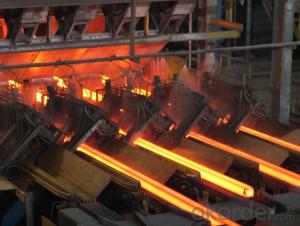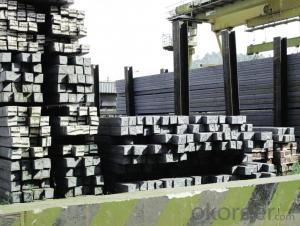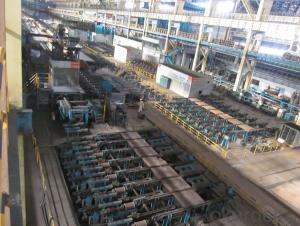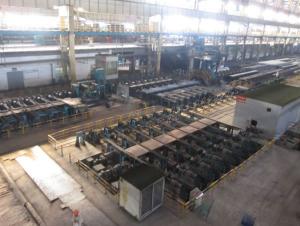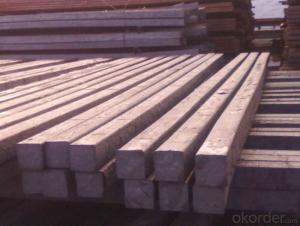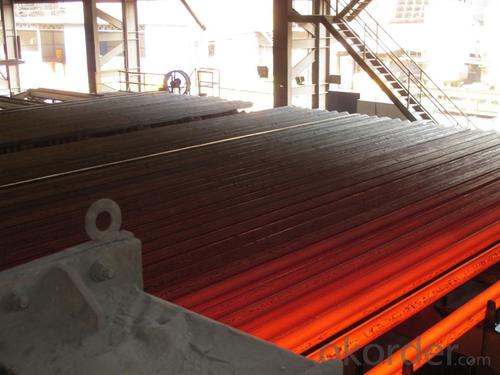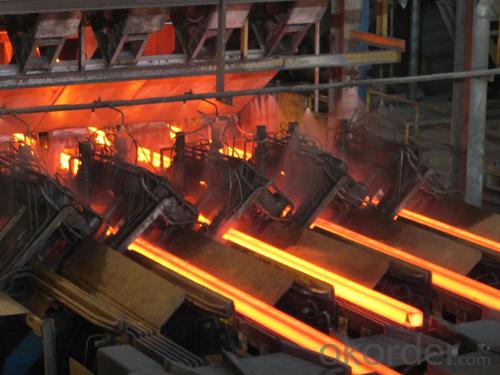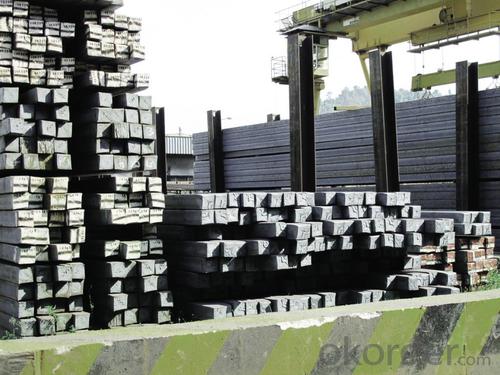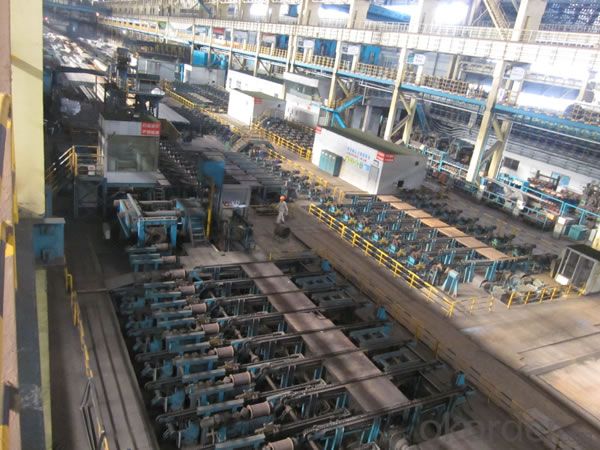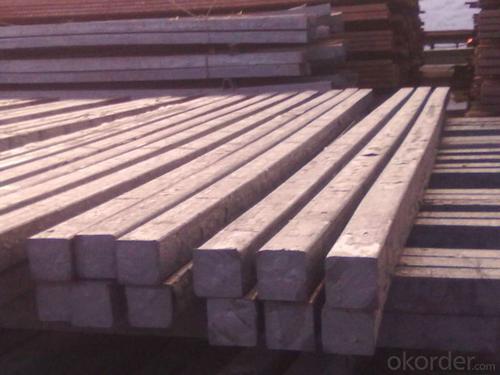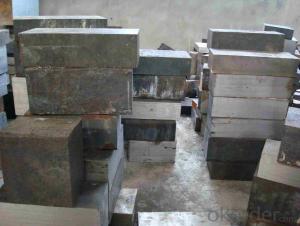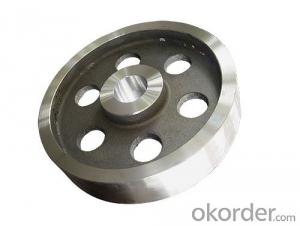Prime quality prepainted galvanized steel 665mm
- Loading Port:
- Tianjin
- Payment Terms:
- TT OR LC
- Min Order Qty:
- 100 m.t.
- Supply Capability:
- 10000 m.t./month
OKorder Service Pledge
OKorder Financial Service
You Might Also Like
Construction building material galvanized color prepainted cold
rolled steel coil
Prepainted steel sheet is coated with organic layer, which provides higher anti-corrosion property and
a longer lifespan than that of galvanized steel sheets.
The base metals for prepainted steel sheet consist of cold-rolled, HDG electro-galvanized and hot-dip
Alu-zinc coated. The finish coats of prepainted steel sheets can be classified into groups as follows:
polyester, silicon modified polyesters, polyvinylidene fluoride, high-durability polyester, etc

Standard and Grade :
Pre-paint galvanized steel coil | ||||
ASTM A755M-03 | EN10169:2006 | JISG 3312-2012 | ||
Commercial quality | CS | DX51D+Z | CGCC | |
Structure steel | SS GRADE 230 | S220GD+Z | CGC340 | |
SS GRADE 255 | S250GD+Z | CGC400 | ||
SS GRADE 275 | S280GD+Z | CGC440 | ||
SS GRADE 340 | S320GD+Z | CGC490 | ||
SS GRADE550 | S350GD+Z | CGC570 | ||
S550GD+Z | ||||
Application:
Outdoor | Roof, roof structure, surface sheet of balcony, frame of window, door of garage, rolled shutter door, booth, Persian blinds, cabana, etc |
Indoor | Door, isolater, frame of door, light steel structure of house, home electronic appliances, ect. |
Specifications
Commodity Name: Prepainted Galvanized Steel Coil
Standard: AISI, ASTM, DIN, GB, JIS
Grade: TDC52D+Z
Thickness 0.13-8.0mm
Width:600mm-1350mm
Zinc Coating:275g/m2
Polyester Coating Thickness:Top and Back coating thickness depend by Buyer Requirement.
Polyester Coating Type:2/2,1/2m,1/2.
Polyester Type: Polyester, silicone modified polyester, high durability polyester (HDP), polyvinylidene fluoride (PVDF)
Unit Roll Weight:5-20tons
Place of Origin Shanghai , China (Mainland)
Surface Treatment :Color Coated
Manufacture Progress:HRC-CRC-GALVANIZED-COLOR COATED
Application : Construction, electrical, transportation, steel plant, composite board plant, steel tile factory
Payment & Shipping Terms:T/T ,L/C, and FOB CHINA
Minimum Order Quantity: 25Tons
Packge Type: Moisture-proof paper inner,Steel outside,Bundle by steel rope.
Package in Container : Wood as a foot pad, wire rope reinforcement,PPGI steel coil tied together by steel rope.
- Q: How are steel billets used in the production of automotive fuel systems?
- Automotive fuel systems rely on steel billets as a necessary element. These billets, typically crafted from top-grade steel, serve as the primary material for manufacturing various fuel system components such as fuel injectors, fuel rails, and fuel tank brackets. The initial step in utilizing steel billets for automotive fuel systems involves selecting the appropriate steel grade. The selected steel must possess specific mechanical properties, including high strength, weldability, and corrosion resistance. These properties ensure the durability of the fuel system components, enabling them to withstand the demanding conditions and stresses they will encounter throughout their lifespan. Once the steel billets are chosen, they undergo a series of manufacturing processes, including forging, machining, and heat treatment. Forging molds the billets into the desired shapes using a combination of heat and pressure. This process guarantees that the fuel system components possess the necessary strength and resilience. Machining is another crucial stage in the production of automotive fuel systems. This process entails removing excess material from the forged billets to achieve the desired shape and dimensions. Precise machining ensures that the fuel system components fit seamlessly within the overall system, allowing for efficient and dependable fuel delivery. Following the machining process, the fuel system components undergo heat treatment. This involves subjecting the components to specific temperatures and controlled cooling rates. Heat treatment enhances the mechanical properties of the steel, further bolstering its strength and toughness. Once the fuel system components are manufactured from the steel billets and have undergone all the necessary processes, they are assembled into the final fuel system. These components play a pivotal role in facilitating the efficient and safe delivery of fuel from the tank to the engine. For instance, fuel injectors ensure precise fuel delivery, fuel rails provide a pathway for fuel flow, and fuel tank brackets securely hold the tank in place. In conclusion, steel billets are an indispensable ingredient in the production of automotive fuel systems. Through a series of manufacturing processes including forging, machining, and heat treatment, these billets are transformed into high-quality fuel system components. When assembled, these components create a fuel system that enables automobiles to achieve efficient and reliable fuel delivery.
- Q: Are steel billets used in the manufacturing of oil and gas pipelines?
- Yes, steel billets are commonly used in the manufacturing of oil and gas pipelines. Steel billets are semi-finished products that are typically produced through a process called continuous casting, where molten steel is solidified into a rectangular shape. These billets serve as the starting material for various steel products, including pipes used in the oil and gas industry. The manufacturing process of oil and gas pipelines involves several steps, one of which is the production of seamless or welded steel pipes. Steel billets are heated and then rolled into tubes or pipes through a process called pipe making. For seamless pipes, the heated billet is pierced to form a hollow shell, which is then elongated and shaped into a pipe. Welded pipes are created by rolling and welding a flat plate of steel to form a tube. The use of steel billets in pipeline manufacturing is preferred due to the excellent mechanical properties of steel, including its strength, durability, and resistance to corrosion. These properties make steel an ideal material for pipelines that need to withstand high-pressure environments and harsh conditions. Additionally, steel billets can be customized in terms of size, shape, and composition to meet the specific requirements of each pipeline project. In conclusion, steel billets play a crucial role in the manufacturing of oil and gas pipelines. They serve as the raw material that is transformed into seamless or welded pipes, which are then used to transport oil and gas across long distances. The use of steel ensures the reliability and integrity of these pipelines, making them essential components of the oil and gas industry.
- Q: What are the main factors affecting the electrical conductivity of steel billets?
- The electrical conductivity of steel billets is primarily influenced by several key factors. 1. Composition: The chemical composition of steel, particularly the presence of alloying elements, significantly affects its electrical conductivity. Elements such as carbon, manganese, silicon, and phosphorus can alter the conductivity properties of steel. 2. Impurities: The presence of impurities in steel, such as sulfur and oxygen, can lower its electrical conductivity. These impurities can create barriers to the flow of electric current within the material. 3. Grain structure: The grain structure of steel, which is influenced by factors like temperature and cooling rate during the manufacturing process, can impact its electrical conductivity. A fine-grained structure generally results in higher conductivity due to the presence of fewer barriers to electron flow. 4. Heat treatment: The heat treatment process applied to steel billets can affect their electrical conductivity. Specific heat treatments, such as annealing or quenching, can modify the microstructure of the material and consequently impact its conductivity. 5. Temperature: Temperature has a significant effect on the electrical conductivity of steel billets. Generally, as temperature increases, the conductivity decreases due to increased thermal vibrations that impede the flow of electrons. 6. Surface conditions: The surface condition of steel billets, including the presence of oxides, scale, or contaminants, can influence their electrical conductivity. A clean and smooth surface promotes better conductivity by reducing any barriers to electron flow. 7. Mechanical stress: The presence of mechanical stress or strain in steel billets can affect their electrical conductivity. Deformation caused by processes such as rolling, forging, or bending can alter the material's crystal structure and introduce dislocations, which can impact conductivity. Overall, the electrical conductivity of steel billets is a complex property that is influenced by various factors such as composition, impurities, grain structure, heat treatment, temperature, surface conditions, and mechanical stress. Understanding and controlling these factors is crucial for ensuring the desired electrical conductivity in steel billets for various applications.
- Q: What are the main factors affecting the heat resistance of steel billets?
- The main factors affecting the heat resistance of steel billets include the alloy composition of the steel, the presence of impurities, the grain size of the steel, the heat treatment process, and the cooling rate during quenching.
- Q: Can steel billets be forged into complex shapes?
- Yes, steel billets can be forged into complex shapes using various forging techniques such as open die forging, closed die forging, or impression die forging. These processes involve heating the billet and applying pressure to shape it into the desired form.
- Q: Can steel billets be heat treated for increased hardness?
- Yes, steel billets can be heat treated to increase their hardness. Heat treatment is a process that involves heating the steel billets to a specific temperature and then cooling them rapidly or slowly, depending on the desired hardness. This process is typically done to improve the mechanical properties of the steel, such as hardness, strength, and wear resistance. There are different heat treatment methods that can be used to increase the hardness of steel billets. One common method is called quenching and tempering. In this process, the steel billets are heated to a high temperature, typically above its critical temperature, and then rapidly cooled by quenching them in a liquid medium, such as oil or water. This rapid cooling causes the steel to harden. However, the steel can become too brittle in this state, so it is then tempered by reheating it to a lower temperature. This tempering process helps to reduce the brittleness and increase the toughness of the steel while maintaining its hardness. Another heat treatment method that can be used for increasing hardness is called case hardening. This process involves changing the composition of the steel surface to create a hard outer layer while maintaining a softer core. Case hardening is typically achieved by introducing carbon or nitrogen into the surface of the steel billets through processes such as carburizing or nitriding. The steel billets are then heated to a specific temperature and held for a certain period of time, allowing the carbon or nitrogen to diffuse into the steel. This creates a hardened surface layer, which provides increased hardness and wear resistance while retaining the toughness of the core. In conclusion, steel billets can be heat treated to increase their hardness. The specific heat treatment method used will depend on the desired level of hardness, as well as other mechanical properties required for the application of the steel.
- Q: What are the different types of steel billet inspection equipment?
- There are several different types of steel billet inspection equipment used in the manufacturing industry. These equipment are specifically designed to ensure the quality and integrity of the steel billets before they are further processed. 1. Ultrasonic Testing (UT) Equipment: This type of equipment uses high-frequency sound waves to detect internal flaws or defects in the steel billets. It can identify cracks, voids, and other imperfections that may affect the strength and performance of the final product. 2. Magnetic Particle Inspection (MPI) Equipment: MPI equipment uses a magnetic field and specially formulated particles to identify surface and near-surface defects in the steel billets. It can detect cracks, seams, and other imperfections that may not be visible to the naked eye. 3. Eddy Current Testing (ECT) Equipment: ECT equipment uses electromagnetic induction to detect surface cracks and defects in the steel billets. It can identify variations in electrical conductivity caused by localized defects or changes in material properties. 4. Visual Inspection Equipment: Visual inspection equipment includes tools such as magnifying glasses, microscopes, and cameras to visually examine the steel billets for surface defects, irregularities, or other visual anomalies. This type of equipment is often used in conjunction with other inspection methods for a comprehensive analysis. 5. Dimensional Measurement Equipment: This type of equipment is used to measure the dimensional accuracy and consistency of the steel billets. It includes tools such as calipers, micrometers, and laser scanners to ensure that the billets meet the required specifications and tolerances. 6. Surface Roughness Measurement Equipment: Surface roughness measurement equipment is used to quantify the surface finish of the steel billets. It uses a stylus or laser to measure the irregularities on the surface, providing important information about the billet's suitability for further processing. 7. X-ray Testing Equipment: X-ray equipment uses electromagnetic radiation to penetrate the steel billets and detect internal defects such as cracks, voids, or inclusions. This method is particularly effective for larger billets or when a comprehensive assessment of the internal structure is required. These are some of the commonly used steel billet inspection equipment in the manufacturing industry. Each type of equipment plays a crucial role in ensuring that the steel billets meet the required quality standards and are suitable for further processing into various end products.
- Q: What is the chemical composition of steel billets?
- Steel billets are primarily composed of iron, with varying amounts of carbon and other alloying elements such as manganese, silicon, and trace amounts of sulfur and phosphorus.
- Q: What is the average lifespan of a steel billet in a structural application?
- The average lifespan of a steel billet in a structural application can vary greatly depending on several factors. These factors include the quality of the steel used, the specific structural application, the environmental conditions, and the level of maintenance and care provided to the structure. In general, steel is known for its durability and longevity, making it a popular choice for structural applications. With proper design, construction, and maintenance, a steel billet can have a lifespan that ranges from several decades to over a century. However, it is important to note that certain factors can significantly impact the lifespan of a steel billet. For example, exposure to harsh environmental conditions such as extreme temperatures, corrosive substances, or high levels of humidity can accelerate the deterioration of the steel and reduce its lifespan. Similarly, the structural application itself plays a crucial role in determining the lifespan of a steel billet. Structures subject to heavy loads, frequent vibrations, or dynamic stresses may experience faster deterioration and require more frequent maintenance or replacement. Lastly, the quality of the steel used also influences the lifespan of a steel billet. Higher quality steels, such as those with superior corrosion resistance or higher tensile strength, tend to have longer lifespans compared to lower grade steels. To accurately determine the average lifespan of a steel billet in a specific structural application, it is recommended to consult with structural engineers, manufacturers, or industry experts who can evaluate the specific conditions and provide a more accurate estimate based on their expertise and knowledge of the particular project.
- Q: Difference between billet, slab and billet
- Production process of billet is through three methods: one is through the production of steelmaking and continuous casting equipment system, the molten steel is directly cast into the billet; two of steelmaking production systems of steel ingot or billet by rolling system of steel rolling equipment processing semi-finished products; three is the production of steelmaking system by forging semi-finished steel ingot the processing equipment. Market trends 1, domestic crude steel production remains high, although the domestic steel market has been relatively sluggish in recent times, and steel losses are more, but this does not seem to affect the enthusiasm of steel production. According to the China Steel Association statistics show that: in early April, the daily output of crude steel in key enterprises in China was 1 million 697 thousand and 300 tons, and the average daily output of crude steel in China was estimated at 2 million 123 thousand and 900 tons. And in mid April, crude steel daily output of ten days, although there has been a drop back, but still at a high level. According to statistics, in mid April, the average daily output of crude steel in key enterprises nationwide was 1 million 689 thousand and 100 tons, and the average daily output of crude steel in China was estimated at 2 million 115 thousand and 800 tons. Such a large production and sluggish demand in stark contrast, which is a drag on steel prices down one of the important factors.
Send your message to us
Prime quality prepainted galvanized steel 665mm
- Loading Port:
- Tianjin
- Payment Terms:
- TT OR LC
- Min Order Qty:
- 100 m.t.
- Supply Capability:
- 10000 m.t./month
OKorder Service Pledge
OKorder Financial Service
Similar products
Hot products
Hot Searches
Related keywords

